#Ruth McCrea
Explore tagged Tumblr posts
Text

Joel McCrea-Nancy Kelly-Spencer Charters "He married his wife" 1940, de Roy Del Ruth.
5 notes
·
View notes
Text

Nancy Kelly, Joel McCrea, Mary Boland, and Lyle Talbot during production of HE MARRIED HIS WIFE (1940) at Fox. Director: Roy Del Ruth
20 notes
·
View notes
Text
Thread
Correct this: It's Miriam Hopkins' birthday. By far one of my favorite stars ever. Also one with an impressive number of great movies, considering that she made just 35. A long, long thread on her best work.

1931 - The Smiling Lieutenant was the first of three movies she made with Lubitsch. The master himself.

1931 - Dr. Jekyll and Mr. Hyde. A super classic directed by Rouben Mamoulian, with whom she made two movies. Her prostitute is unforgettable.

1932 - Trouble in Paradise. Lubitsch again. The mount Rushmore of comedies, the best film ever made.

1933 - She starred in the controversial adaptation of Faulkner's Sanctuary, The Story of Temple Drake. Not a masterpiece, but a unique piece where she delivers one of her finest, most restrained performances.

1933 - She went to MGM to film The Stranger's Return under King Vidor's direction. A very adult film in which she plays a divorcée who brings some needed chaos to her granddad's farm.

1933 was a glorious year for Mims. She made her final film with Lubitsch, Design for Living. She thoroughly enjoys a ménage à trois with Gary Cooper and Fredric March. Attagirl.

1935 - She made the first feature film produced in Technicolor. Becky Sharp, a slim adaptation of Vanity Fair. Only Mamoulian could cram 1000 pages into 80 minutes. Great fun. She nails it.

1935 - Not everybody loves Barbary Coast. It has its flaws, but blame them on masters Howard Hawks and Ben Hecht. It's a beautiful production though, and not only does she make love with McCrea, but she makes Eddie Robinson suffer.

1936 - Another all-time classic, a masterpiece from Lillian Hellman's The Children's Hour. It was titled These Three and was the first of her four films with master William Wyler, a record no other actress ever had.

1939 - Her first fight with Bette Davis: The Old Maid. It's a soaper, all right, but the two together sparkle and the match is even.

1943 - Her second round with Bette: Old Acquaintance. Davis wanted someone else, but Jack Warner was adamant. He knew Miriam would give her a run for her money. Vincent Sherman directed with gusto. And we watch it with gusto.

1949 - Back with Wyler for The Heiress. Paramount was startled by her salary demands, and decided to use another actress, after all the star was de Havilland. Production started with Ruth Warrick, but Wyler stopped it and demanded Warrick be replaced by Mims. Thank Heaven.

1951 - The Mating Season, her only venture with another master, Mitchell Leisen. She's Thelma Ritter's foil. Thelma's the good guy, Miriam's the bitch, of course. A witty, brilliant comedy written by Charles Brackett that deserves to be better known. Fun, fun, fun.

1952 - With Wyler again, in a blood-thirsty characterization. She's really cruel as Laurence Olivier's wife in Carrie. The film is beautiful, even better than Dreiser's book.

Last venture with Willy Wyler in the remake of The Children's Hour. She plays a different character this time, and she steals the show from under the actual stars of the film: Hepburn, MacLaine, and Garner.

1966 - Let's call it her swan song. In Arthur Penn's The Chase she was Robert Redford's hardened mom. A brief part, she manages to make memorable. End of thread.

Source https://twitter.com/hazelflagag
Unroll thread with https://unrollnow.com/
4 notes
·
View notes
Text
new muses again !

alice mcmahon, the people under the stairs, canon-compliant/post-canon, she/they. faceclaim: lilyana wray. ( found in: the horror section. )
cody webb, original, painfully self-aware barista, he/him. faceclaim: miles mckenna. ( found in: the horror section. )
corinne peterson, original, high school librarian, she/her. faceclaim: ashley moore. ( found in: the slice of life section. )
hyun yeong-cheol, original, eldritch horror entomologist, he/they/it, faceclaim: yoon jong-hoon. ( found in: the paranormal section. )
jules fowler, original, owner of a cursed murder house, he/him, faceclaim: dan stevens. ( found in: the horror section. )
moe rutherford, the stuff, canon-compliant/post-canon, he/him. faceclaim: boyd holbrook. ( found in: the crime section. )
"patches" mccrea, original, disgruntled movie rental clerk, he/him. faceclaim: brian tyree henry. ( found in: the slice of life section.)
roman delano, original, werewolf competitive swimmer, he/him. faceclaim: misia butler. ( found in: the paranormal section. )
samirah yu, original, baddie babysitter & gig-economy performer, she/her. faceclaim: brianne tju. ( found in: the slice of life section. )
fc changes:
ruth codd is sally mckenna.
moved to request only/removed:
christopher khalil.
reggie king.
xander french.

4 notes
·
View notes
Photo

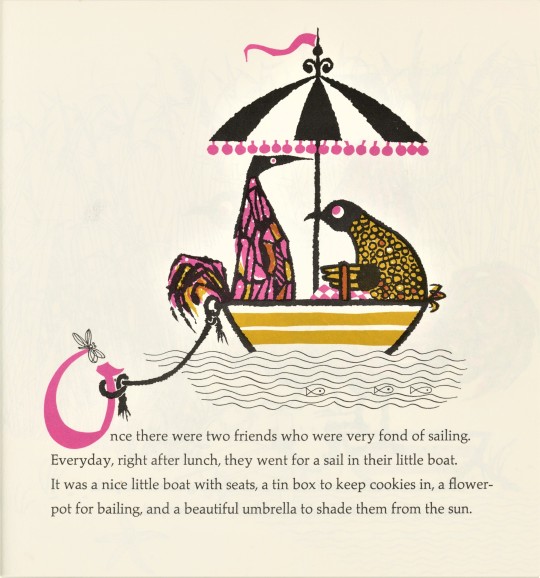

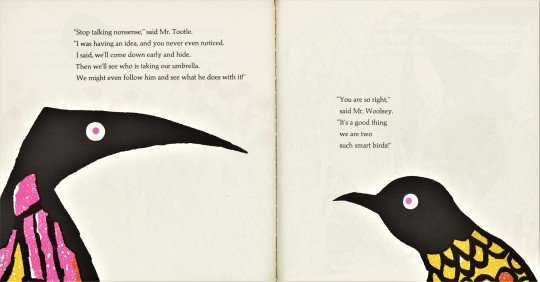



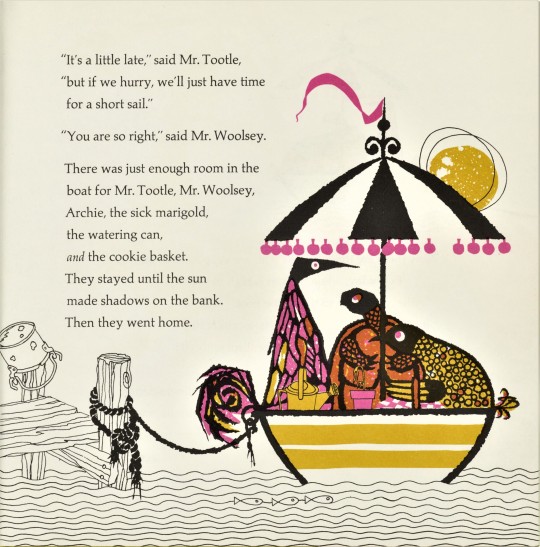

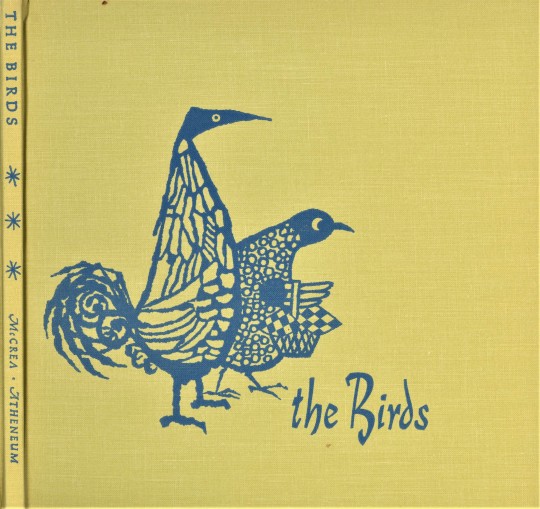
A McCrea-Illustrated Feathursday
We keep with our children’s-book theme for this #Feathersday (our last two were also from children’s books) with Ruth and James McCrea’s The Birds, originally published in New York by Atheneum in 1966. Our copy is the second printing in 1967. Both Ruth (née Pirman, 1921-2016) and James McCrea (1920-2013) were prolific artists, illustrators, designers, and picture book authors. They met as students at the Ringling School of Art in Sarasota, Florida and married in 1943 (read Ruth’s obituary for her curious connection to the Ringling Brothers Circus).
The story of The Birds concerns two feathered friends, Mr. Woolsey and Mr. Tootle, who own a fine little boat with “a beautiful umbrella to shade them both from the sun.” After a stroll one day, they discover upon their return that their umbrella is gone. But later it reappears, and the next day it’s gone again. The birds set out to solve the mystery and discover that Archibald Turtle had been borrowing it each day to shield his ailing marigold plant from the sun. What to do? They compromise by bringing Archie and his plant onto the boat with them. The marigold thrives and they all become fast friends. What nice birds!
The book jacket makes special, detailed mention of the “Spartan Binding,” shown in the last image, by H. Wolff Bindery in New York:
Spartan picture book bindings feature side sewing through drill cloth reinforcement, both endpapers, and text pages. The pyroxylin impregnated cloth is washable, damp proof, and soil resistant. The binding is guaranteed to last for the lifetime of the sheets.
After nearly 60 years, the claim holds true.
View another book illustrated by Ruth McCrea.
View more historical children’s books.
View more Feathursday posts.
#Feathursday#children's books#picture books#illustrated books#Ruth McCrea#James McCrea#The Birds#Atheneum Books#H. Wolff Bindery#Historical Curriculum Collection#birds#birbs!
265 notes
·
View notes
Photo

Aquavit to Zombie...
Basic and Exotic Drinks, Book Cover, 1957
Written by Peter Beilenson, Illustrated by Ruth McCrea
#1957#'57#'50s#50s#fifties#1950s#50s book covers#50s cover art#aquavit to zombie#peter beilenson#ruth mccrea#50s illustration#50s cocktails
67 notes
·
View notes
Photo

Simple French Cookery | Edna Beilenson (Author), Ruth McCrea (Illustrator)
0 notes
Photo

Love Poems and Love Letters
#love poems#love letters#peter pauper press#ruth mccrea#vintage books#gifts#valentines day#anniversary
1 note
·
View note
Photo



1 note
·
View note
Photo

Ruth and James McCrea, Cover design for Men Without Women by Ernest Hemingway. Oil paint on board
9 notes
·
View notes
Text


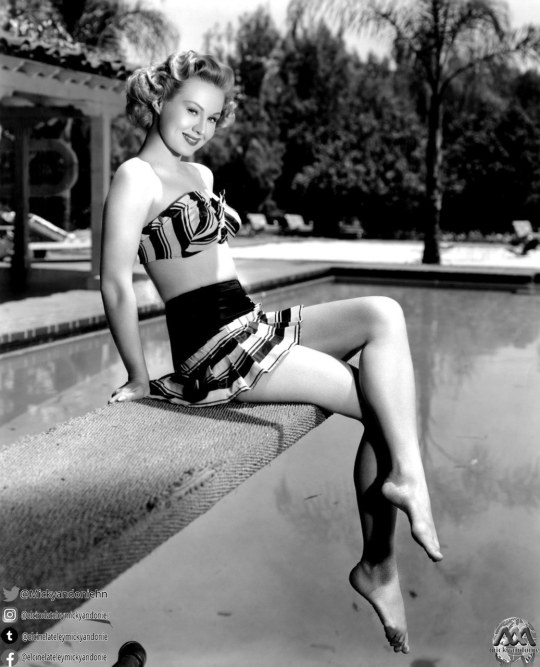

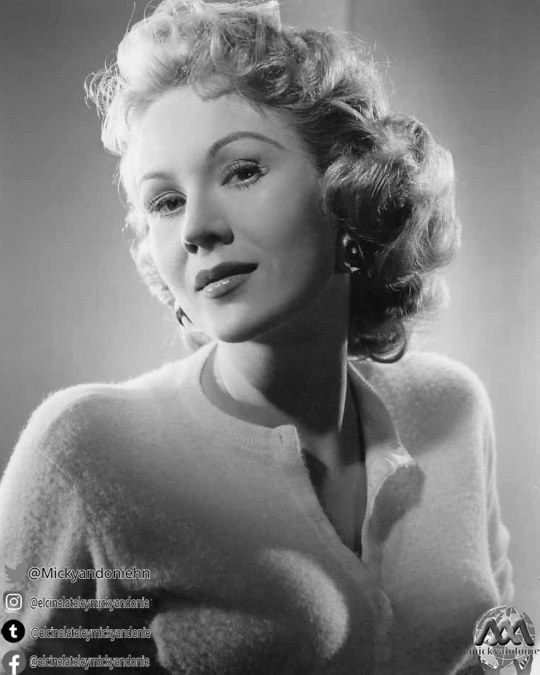


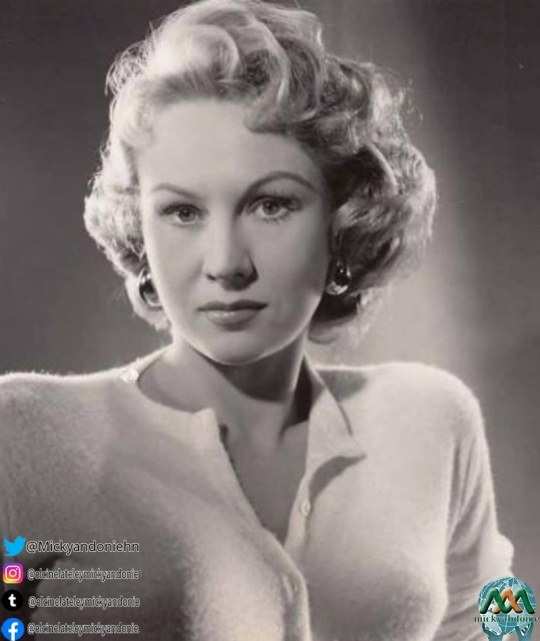
VIRGINIA MAYO.
Filmography
• Jack London (1943)
• The Princess and the Pirate (1944) de David Butler ("La princesa y el pirata", ya comentada).
• Seven Days Ashore (1944) de Elliott Nugent (Rumbo a Río, musical donde la actriz trabajaba con la legendaria Dinah Shore).
• Wonder Man (1945) (Un hombre fenómeno con Danny Kaye y Vera-Ellen).
• Los mejores años de nuestra vida (1946) de William Wyler (Los mejores años de nuestra vida, joya absoluta del cine norteamericano de los 40, triunfador en los Oscar de ese año, magistralmente dirigido y con inolvidable cast (Fredric March, Myrna Loy, Dana Andrews, Theresa Wright).
• The Kid from Brooklyn (1946) de Norman Z. MacLeod (El asombro de Brooklyn, versión de una célebre comedia de Harold Lloyd de 1936, La vía láctea, con Danny Kaye y Vera-Ellen).
• The Secret Life of Walter Mitty (1947) de Norman Z. MacLeod ("La vida secreta de Walter Mitty, brillante comedia que pertenece a la mejor época de Danny Kaye, y en la que destaca también Boris Karloff).
• Out of the Blue (1947)
• Smart Girls Don't Talk (1948)
• A Song Is Born (1948) (Nace una canción, nueva versión, esta vez musical, de Bola de fuego (1941)).
• Always Leave Them Laughing (1949)
• Flaxy Martin (1949)
• Red Light (1949)
• White Heat (1949) de Raoul Walsh (Al rojo vivo o una de las obras maestras del cine negro norteamericano, en compañía de James Cagney y Edmond O´Brien)).
• The Girl from Jones Beach (1949)
• Colorado Territory (1949) de Raoul Walsh (Juntos hasta la muerte, western dramático en el que destacó ante actores como Joel McCrea y Dorothy Malone).
• The West Point Story (1950) de Roy del Ruth (de nuevo con James Cagney).
• El halcón y la flecha (1950) de Jacques Tourneur (una de las cumbres del cine de aventuras de todos los tiempos, con Burt Lancaster).
• Backfire (1950)
• Starlift (1951)
• Painting the Clouds with Sunshine (1951)
• Along the Great Divide (1951)
• Captain Horatio Hornblower (1951) de Raoul Walsh, junto a Gregory Peck.
• The Iron Mistress (1952) de Gordon Douglas (La novia de acero, western).
• She's Working Her Way Through College (1952)
• Devil's Canyon (1953) de Alfred Werker (Noche salvaje, western donde tenía como compañeros a Dale Robertson.
4 notes
·
View notes
Text

Nancy Kelly-Joel McCrea "He married his wife" 1940, de Roy Del Ruth.
7 notes
·
View notes
Text

Joel McCrea and Nancy Kelly in Roy Del Ruth’s HE MARRIED HIS WIFE (1940)
22 notes
·
View notes
Text

Violet Ethelred Krauth (October 17, 1913 – November 9, 2006), better known by the stage name Marian Marsh, was a Trinidad-born American film actress and later an environmentalist.
Violet Ethelred Krauth was born on October 17, 1913, in Trinidad, British West Indies (now Trinidad and Tobago), the youngest of four children of a German chocolate manufacturer and, as noted by encyclopaedist Leslie Halliwell in his book The Filmgoer's Companion, his French-English wife.
Owing to World War I, Marsh's father moved his family to Boston, Massachusetts. By the time she was 10, the family had relocated to Hollywood, California. Her older sister, an actress who went by the name of Jean Fenwick, landed a job as a contract player with FBO Studios. Another sister, Harriet, was a chorus girl who danced in Earl Carroll's Vanities. She changed her name to Jeanne Morgan.
Marsh attended Le Conte Junior High School and Hollywood High School. In 1928 she was approached by silent screen actress Nance O'Neil, who offered her speech and movement lessons, and with her sister Jean's help, she soon entered the movies. She secured a contract with Pathé, where she was featured in many short subjects under the name Marilyn Morgan.
She was seen in small roles in Howard Hughes's classic Hell's Angels (1930) and Eddie Cantor's lavish Technicolor musical Whoopee! (1930). The part in Whoopee! resulted from Marsh's visit to a film studio with her sister. Not long afterwards, she was signed by Warner Bros. and her name was changed to Marian Marsh.
In 1930, at age 17, Marsh had the female lead in Young Sinners, a play at the Belasco Theater. A contemporary news article reported that she "has scored a distinct hit" in her first stage production.
In 1931, after appearing in a number of short films, Marsh landed one of her most important roles in Svengali opposite John Barrymore. Marsh was chosen by Barrymore for the role of Trilby.[2] Barrymore, who had selected her partly because she resembled his wife, coached her performance throughout the picture's filming. Svengali was based on the 1894 novel Trilby written by George du Maurier. A popular play, based on the book, also titled Trilby, followed in 1895.
In the film version, Marsh plays the artist's model Trilby, who is transformed into a great opera star by the sinister hypnotist Svengali. The word "Svengali'" has entered the English language, defining a person who, with sometimes evil intent, tries to persuade another to do what he desires.
Marsh was awarded the title of WAMPAS Baby Stars in August 1931 even before her second movie with Warner Brothers was released. With her ability to project warmth, sincerity and inner strength on the screen along with critical praise and the audience's approval of Svengali, she continued to star in a string of successful films for Warner Bros., including Five Star Final (1931) with Edward G. Robinson, The Mad Genius (1931) with Barrymore, The Road to Singapore (1931) with William Powell, Under 18 (1932) with Warren William, Alias the Doctor (1932) with Richard Barthelmess, and Beauty and the Boss (1932) with Warren William.
In 1932, in the midst of a grueling work schedule, Marsh left Warner Bros. and moved to RKO, where she made Strange Justice (1932) with Norman Foster and The Sport Parade (1932) with Joel McCrea. After that, she took several film offers in Europe that lasted until 1934. She enjoyed working in England and Germany, as well as vacationing in Paris. While in England, she appeared in the musical comedy film Over the Garden Wall (1934). Back in the United States, she appeared as the heroine Elnora in a popular adaptation of the perennial favorite A Girl of the Limberlost (1934).
In 1935, Marsh signed a two-year pact with Columbia Pictures. During this time, she starred in such films as The Black Room (1935) regarded as one of Boris Karloff's best horror films of the decade, Josef von Sternberg's classic Crime and Punishment (1935) with Peter Lorre, wherein she played the sympathetic prostitute Sonya, Lady of Secrets (1936) with Ruth Chatterton, Counterfeit (1936) with Chester Morris, The Man Who Lived Twice (1936) with Ralph Bellamy, and Come Closer, Folks (1936) with James Dunn.
When her contract expired in 1937, Marsh once again freelanced, appearing steadily in movies for RKO Radio Pictures, where she made Saturday's Heroes (1937) with Van Heflin, and for Paramount Pictures, where she played a young woman caught up in a mystery in The Great Gambini (1937). She appeared with comic Joe E. Brown in When's Your Birthday? (1937), and Richard Arlen in Missing Daughters (1939). In the 1940s, Marsh played Wallace Ford's secretary in Murder by Invitation (1941) and the self-willed wife in Gentleman from Dixie (1941). In her last screen appearance, Marsh portrayed the daughter of an inventor in the comedy/mystery House of Errors (1942), which starred Harry Langdon.
In the late 1950s, she appeared with John Forsythe in an episode of his TV series Bachelor Father and in an episode of the TV series Schlitz Playhouse of Stars before retiring in 1959.
Marsh married a stockbroker named Albert Scott on March 29, 1938, and had two children with him, Catherine Mary Scott (1942-2018) and Albert Parker Scott Jr. (1944-2014). They divorced in 1959. In 1960, Marsh married Cliff Henderson, an aviation pioneer and entrepreneur whom she had met in the early 1930s. They moved to Palm Desert, California, a town Henderson founded in the 1940s.
In the 1960s, Marsh founded Desert Beautiful, a non-profit all-volunteer conservation organization to promote environmental and beautification programs.
Cliff Henderson died in 1984 and Marsh remained in Palm Desert until her death.
In 2006, at age 93, Marsh died of respiratory arrest while sleeping at her home in Palm Desert. She is buried at Desert Memorial Park in Cathedral City, California.
October 17, 2015, was designated as Marian Marsh-Henderson Day by the city of Palm Desert, California.
#marian marsh#classic hollywood#classic movie stars#golden age of hollywood#pre code#1930s hollywood#1940s hollywood
20 notes
·
View notes
Photo

Mary Astor who would have been 115 today, could have been a leading lady any time she felt like it. She rarely did. A few of her great ones:
Edith Cortright in Dodsworth. D: William Wyler (1936). “My Dear. Don’t”, Astor says to Fran Dodsworth (Ruth Chatterton) who is about to deepen a liaison with a suave playboy (Paul Lukas) deceiving her newly retired husband Sam (Walter Huston) in this story of a decaying marriage showing its cracks on a European vacation. Later she’ll provide a peaceful haven for Sam after he realizes his marriage ended years ago. Astor plays a romantic version of a “woman of the world” in this drama of how marriages can sometimes just….end, and in a movie that treats it’s characters like grown-up people instead of vehicles for melodramatic hysterics, she offers a second chance to a newly aimless American (“Do you want to enjoy life for a while”) as the most angelic homewrecker the movies have yet offered.
Brigid O’ Shaughnessy in The Maltese Falcon. D: John Huston (1941). “You’re Good. You’re very good,” Humphrey Bogart’s Sam Spade says to Astor’s almost pathologically dishonest femme fatale and he’s only partly sarcastic. The pleasure he gets when he sees through her lies and the straight face her “woman in trouble” maintains as she spins another story on top of the last one, is this great movie’s version of a love story. Astor plays the woman whose affected vulnerability and tremulous voice has led more than a few men to play the sap for her (at the cost of their lives) as a desperate viper in a no-win situation: she has to outwit him, but doing so would disappoint her. The look on her face when she realizes she’s lost is both funny and pitiful.
Princess Centimillia in The Palm Beach Story. D: Preston Sturges (1942). Astor is like a Tex Avery version of a screwball heiress, as the daughter of one of the richest men in the world who gloms onto newly dumped Tom (Joel McCrea) who is trying to keep his wife Gerry (Claudette Colbert) from marrying John D. Hackensacker III (Rudy Valee) who is Astor’s brother. Princess is oft-married and man crazy and the rapid fire way that Astor says “Look at that very handsome man, I wonder who he is, I don’t think I’ve seen him around before, I thought I knew all the handsome men in this village,” makes me grieve that she never worked with Sturges again. After I’ve stopped laughing of course.
9 notes
·
View notes
Text
Best of Marvel: Week of February 6th, 2019
Best of this Week: Daredevil #1 - Chip Zdarsky, Marco Checchetto and Sunny Gho
We now know fear.
I loved Charles Soule’s run on Daredevil. It brought him back to the cutthroat world of lawyering and fighting ninjas, but after a while, things just kinda waned, I want to say after we found out how people forgot who Daredevil was due to the help of the Purple Children. It got better again after Wilson Fisk became Mayor of New York, but fell off when Matt tried to figure out how Fisk cheated to win the election, only for it to be revealed to be a coma dream after Matt got hit by a truck.
Man Without Fear did a great job of deconstructing Daredevil, finding out what made him tick and what he would be like without the suit, without his ability to fight back his fear and pain.
Daredevil by Chip Zdarsky, however, brought back something that’s been missing for a while: Matt’s Catholic Guilt. It’s the central theme of this issue as we go through Matt’s life as he questions whether or not his actions are just or he deserves things that happen to him. From doing something against the law for a just reason, to him losing his eyesight for a greater purpose, to his (possible) first night as Daredevil being what will send him over the edge and out of the graces of God.
Marco Checchetto is doing the art for Daredevil now and his pencilling here is amazingly different to what he did in Old Man Hawkeye. Whereas there are still dynamic scenes that are cool enough to make posters out of, there are some that hearken back to the days of Alex Maleev or Joe Quesada with a noir feel and Sunny Gho’s colors are excellent in capturing these feelings. Gho uses warm tones in scenes where Daredevil’s in costume, roaming the city and cooler ones when it’s just Matt sitting in his apartment brooding. It’s a nice contrast to who Matt is when he is or isn’t in costume.
This issue also introduces an interesting new foil to Daredevil, a no-superhero-nonsense cop from Chicago by the name of Cole North. He’s a giant black man with a penchant for justice and law, not the violence for violence sake that he believes Daredevil to be about. I’m very excited for how he’ll try to capture Daredevil as the story goes on, especially after the climax of the story.
Daredevil has been on a roll recently and while that is likely just my bias talking, I wholeheartedly believe that Zdarsky, Checchetto and Gho’s run will live up to the standards set by Brian Michael Bendis, Ed Brubaker and every other amazing team that’s worked on Daredevil.
---------------------------------------------------
This Over-Sized Issue has three stories and I thought I wouldn't like it.
Runner Up: Uncanny X-Men #11 - Matthew Rosenberg, Salvador Larroca, Rachelle Rosenberg, John McCrea, Mike Spicer and Juanan Ramirez
I thought Cyclops return in the Uncanny X-Men Annual was a fluke, but I was wrong. I was never into Cyclops as a character because he seemed too straight laced at times or even too naive and lovestruck and when he became nu-Magneto, I thought he was insane, but this Cyclops is a perfect mix of both. He’s a crusader for mutant rights, but he’s also still a hero for humanity as a whole.
In the first of the three stories, we see Cyclops trying to solve the disappearance of The X-Men and most of the world population of mutants with the help of “Multiple Man” Jamie Madrox and a more melancholy than usual “Blindfold” Ruth Aldine who gives him cryptic warnings of the future. At an Anti-Mutant Rally where a cure for the X-Gene (yeah real original) is revealed again, Cyclops makes himself known after being attacked and is confronted by Captain America and instead of fighting him, he sends a message to anyone willing to fight with him. He is instead met by Reavers, Purifiers and members of the Sapien League only to be saved by Wolverine!
In a beautifully drawn fight, Larroca puts his skills on display in a few shots that highlight both men’s fighting styles. Wolverine’s brutality and Cyclops precision are fantastic.
In a story starring Wolverine, we find that he’s been following Cyclops and fighting ff those that are trying to kill off the rest of mutantkind. Initially, he just wants to make sure that Cyclops isn’t doing anything stupid, but upon seeing Blindfold himself, and having Black Widow and Bucky try and talk him out of helping Scott, he decides that he needs to.
I’ve never like John McCrea’s art much, but against the winter backdrop and Wolverine’s rough style, he really does a great job at bringing each scene to life, placing Wolverine at great distances or in shadows, obscuring him as he still doesn’t want to be recognized as being alive again.
The final story definitely requires a trigger warning as Blindfold shows many of the signs of someone suffering from depression and the “sweet” resignation of her fate as it leads to her suicide. Almost all of the color is dark or a deep red, denoting violent or distressing thoughts as Blindfold is seeing her past and present simultaneously, but her future isn’t there. Whether or not this is because of her killing herself or because of some impending doom that will destroy all life isn’t entirely made clear, but dear Lord did it make fo a powerful ending, especially for a character with such a tragic history in the first place.
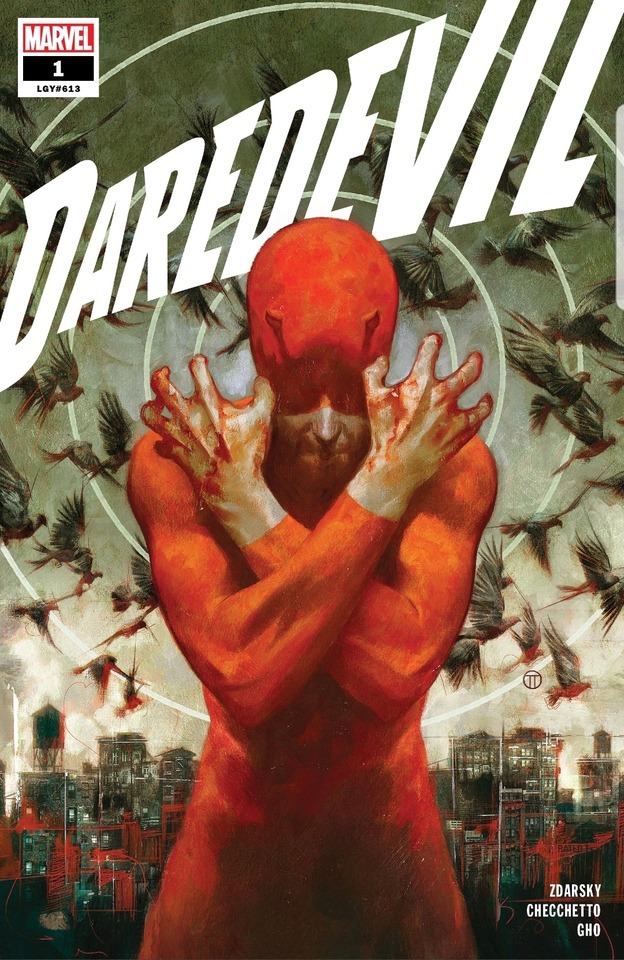

#comics#marvel#marvel comics#daredevil#matt murdock#chip zdarsky#marco checchetto#sunny gho#uncanny x men#x men#cyclops#wolverine#scott summers#logan howlett#matthew rosenberg#salavdor larocca#noir
3 notes
·
View notes